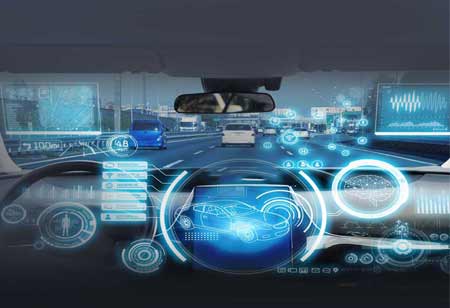AI has significantly impacted the automotive industry, particularly collision avoidance systems. EU regulations have increased integration and reduced road fatalities and injuries.
FREMONT, CA: The advent of artificial intelligence (AI) has transformed numerous industries, including the automotive sector. A notable application of AI within this industry is the development of collision avoidance systems (CAS). These systems, powered by sophisticated AI algorithms, are engineered to prevent or mitigate accidents by identifying potential hazards and taking proactive measures to avoid them.
Autonomous Emergency Braking (AEB) systems leverage advanced AI algorithms to analyse the environment in real-time, processing data from various sensors, including cameras, radar, and lidar. These systems are designed to detect potential collisions with vehicles, pedestrians, or cyclists and can autonomously apply brakes to mitigate or prevent accidents. The AI-driven algorithms enable AEB systems to accurately identify hazards, even under challenging conditions such as low visibility or poor lighting, by distinguishing between stationary and moving objects and predicting potential collision trajectories. Moreover, AEB systems are equipped with adaptive braking capabilities, allowing them to adjust braking force according to the severity of the detected collision risk, ensuring appropriate responses from full stops to gentler braking.
In addition to AEB, Lane-Keeping Assist (LKA) systems also employ AI algorithms to enhance vehicle safety by monitoring lane position. If the vehicle begins to drift, LKA systems can take corrective actions by warning the driver or steering the car back into the correct lane. Advanced LKA systems offer adaptive steering, adjusting their assistance based on road conditions and the driver's behaviour, such as providing more aggressive steering support on winding roads. This technology is particularly beneficial in preventing accidents caused by driver distraction, fatigue, or medical emergencies.
Advanced AI-driven CAS are evolving beyond basic features like AEB and LKA. These systems now include sophisticated functionalities designed to enhance vehicle safety. For instance, intersection assist technology helps prevent collisions by detecting oncoming traffic at intersections and alerting the driver. Blind spot monitoring utilises sensors to detect vehicles in areas not visible to the driver, providing timely warnings. Emergency lane departure prevention actively steers the car back into its lane, mitigating the risk of accidents. Additionally, adaptive cruise control with stop-and-go functionality maintains a safe following distance and can bring the vehicle to a complete stop in traffic. Driver drowsiness detection monitors driver behaviour, issuing alerts if signs of fatigue are observed.
European Union (EU) regulations have been instrumental in adopting AEB and LKA systems in vehicles across the region. The European New Car Assessment Programme (Euro NCAP), an independent car safety evaluation program, has set rigorous safety standards mandating that AEB and LKA systems be included as standard equipment in new vehicles. This has significantly increased the availability and integration of these technologies within the European automotive market.
AI-driven collision avoidance systems, such as AEB and LKA, enhance road safety by detecting potential hazards and proactively preventing accidents. These systems effectively reduce rear-end collisions and lane departure incidents, significantly contributing to road fatalities and injuries.

 Copyright © 2025 AutoTech Outlook. All Rights Reserved | Privacy Policy | Subscribe | Sitemap | About us | Feedback Policy | Editorial Policy
Copyright © 2025 AutoTech Outlook. All Rights Reserved | Privacy Policy | Subscribe | Sitemap | About us | Feedback Policy | Editorial Policy